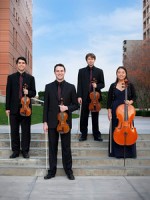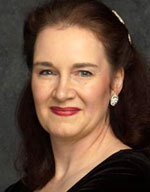For its next program on December 7 and 8, 2013, at National City Christian Church, Amadeus Concerts will present brass quintets for the season performed by members of the Amadeus Orchestra brass section and the Children’s Chorus of Washington, Joan Gregoryk, Artistic Director and Conductor, paying tribute to the holidays and the composer Benjamin Britten (1913-1976) with “A Ceremony of Carols.” Susan Robinson, principal harpist of the Washington National Opera, will be harp soloist in the Britten.
Category Archives: Seasonal
A feast of visual arts at post-concert reception
Those attending the season-opening orchestral concert of Amadeus Concerts on Sunday, September 29th at St. Luke’s Catholic Church in McLean are in for a special treat. In addition to an afternoon of spectacular music, and in honor of Great Falls Studio’s 10th anniversary, Amadeus Concerts has invited a number of GFS artists to exhibit their works at the wine and hors d’oeuvres reception immediately following the concert.
Among those showing their works will be:
- Karen Bateman, oil painting, www.karenbatemanart.com
- Betty Ganley, watercolor painting, www.bettyganley.com
- Cindy Grisdela, contemporary fiber artist, www.cindygrisdela.com
- Margaret Johnson, oil painting, www.margaretjohnsonart.com
- Laura Nichols, clay / pottery, www.pigpenpottery.com
- Dee Leggett, color photography and jewelry, deeleggettphotography.vpweb.
com
Great Falls Studios will be having a 10th Anniversary all-day celebration and exhibit on Saturday, October 5th, at the Great Falls Library, including a free reception with refreshments from 2pm – 4pm.
Two weeks later, on October 19th & 20th, 2013, will be the Great Falls 10th Annual Studio Tour (also free) featuring the works of fifty participating artists at over 30 locations in Great Falls. Further information about this tour will be available at the Amadeus orchestra concert on September 29th.
Come on the 29th, enjoy the music, have a glass of wine, and see a sample of the works by local artists which you will see on the Studio Tour.
2013-14 Season Opener: AO with Steven Honigberg, cello
Season Opener Concert
September 29, 2013, 4pm at St. Luke Catholic Church
The Amadeus Orchestra
A. Scott Wood, conductor
Steven Honigberg, cello
- Mendelssohn: Overture to A Midsummer Night’s Dream
- Tchaikovsky: Variations on a Rococo Theme
- Schubert: Symphony No. 2
Silver-Garburg Piano Duo
UPDATE: The trip to the US by the Silver-Garburg was cancelled when Gil Garburg fell on ice and broke his elbow. We expect to welcome them in our 2013-14 series!
We welcome the return of the internationally-acclaimed Silver Garburg Piano Duo, praised for their “lyrical sensitivity, extraordinary inner perception and overwhelming technical mastery” (Frankfurter Allgemeine Zeitung).
Sivan Silver and Gil Garburg, the married couple and pianists who make up this magnificent duo, return to perform as our guest artists in Mendelssohn’s rarely heard Concerto in E Major for two pianos.
This season is the PIano Duo’s third performance in our concert series, and their first performance with the full Amadeus Orchestra.
The Silver-Garburg Piano Duo enjoys a flourishing international career, with performances in more than fifty countries on five continents. Their many concerts have taken them to prestigious venues, including the Vienna Musikverein, Carnegie Hall, Lincoln Center, Berlin’s Philharmonie and Konzerthaus, and the Sydney Opera House.
We thank long-time Amadeus supporters Jack and Mildred Hardman of Great Falls, Virginia who introduced this wonderful pair to music lovers in Northern Virginia and to Amadeus Concerts.
Read more about the Silver-Garburg Piano Duo.
Calidore String Quartet
 Less than two years ago, four young musicians from across the nation came together in California and adopted their name in tribute to The Golden State. Since winning the 2011 Fischoff and 2012 Chesapeake chamber music competitions, the quartet has gone on to the Aspen Music Festival in Colorado and the Emilia-Romagna Festival in Italy.
Less than two years ago, four young musicians from across the nation came together in California and adopted their name in tribute to The Golden State. Since winning the 2011 Fischoff and 2012 Chesapeake chamber music competitions, the quartet has gone on to the Aspen Music Festival in Colorado and the Emilia-Romagna Festival in Italy.
Elisabeth Adkins, Violin

Elisabeth Adkins performed The Lark Ascending with the Amadeus Orchestra on Sunday, September 16, 2012.
Elisabeth Adkins, Associate Concertmaster of the National Symphony Orchestra, played Vaughan Williams’ The Lark Ascending with the Amadeus Orchestra on Sunday, September 16, 2012.
After graduating from the University of North Texas, Elisabeth Adkins completed both a master’s degree and a doctorate at Yale, where she studied with Oscar Shumsky. In 1983 she was named associate concertmaster of the National Symphony in Washington, where she has established a solid reputation as a concerto performer and recitalist.
As solo violinist of the 20th-Century Consort, Elisabeth is a noted interpreter of contemporary repertoire. Reviewers across the country have praised her playing in phrases such as “a spectacular performance,” “a world-class violinist,” “an impeccable technique and a tone that melted the heart and charmed the soul.” Joseph McLellan, reviewing one of her recitals for the Washington Post, remarked: “As I listened to Adkins, I realized that there is no violinist (including Perlman, Menuhin—anyone) whose playing I prefer.”
Domingo-Cafritz Artists
The Washington National Opera Domingo-Cafritz Young Artists program is unique in guiding singers on the verge of international careers. In addition to performances at the Kennedy Center, the White House and other Washington institutions, they have traveled to Opera de Monte-Carlo and La Scala and have sung in concert with Placido Domingo in Beijing.
The partnership between Amadeus Concerts and the Domingo-Cafritz Program Artists goes back many years. Amadeus Concerts has showcased these talented artists in solo, duet and small ensemble performances both in recital and with the Amadeus Orchestra.
Previous performers on our series include Emily Albrink and Jessica Stecklein, formerly Swink, one of our emerging artist grant recipients.
Washington Symphonic Brass

Experience the full range of Latin American music and its Spanish roots with the Washington Symphonic Brass on Sunday, October 14, 2012 at 4 pm.
The Washington Symphonic Brass is comprised of some of the finest professional musicians in the Washington/Baltimore area. Their members are in constant demand for orchestral, solo, and chamber music performances.Conductor Milt Stevens and Trumpeter Phil Snedecor formed the group of players out of their love of and excitement about this fine literature. Individually, the members of the WSB have performed with many of the nation’s best orchestras, such as the National Symphony Orchestra, the Baltimore Symphony Orchestra, and the Philadelphia Orchestra, among other illustrious institutions. The WSB performs throughout the Washington and Baltimore metropolitan area, appearing at some of the great performance spaces on the east coast. Specializing in compositions written for large brass ensemble and percussion (four trumpets, four horns, four trombones, euphonium, tuba, timpani, and percussion instruments) with organs, choruses, and other instruments optional, the varied repertoire of the Washington Symphonic Brass covers five centuries.
Read more about the Washington Symphonic Brass.
Rutter’s Gloria & Sacred and Secular Holiday Hits
Performers: Reston Chorale & Amadeus Brass
Conductor: David Lang
Venue: Reston Community Center
Date/Time: Saturday, December 1, 2012 at 4 pm, repeated at 7:30 pm
Tickets: This concert is included with the Amadeus 2012-13 series for Amadeus Season Pass holders only. Everyone else should order tickets direct from Reston Chorale at InstantSeats. $25 Adults (19+); $20 Seniors and Youth (16-18); Youth under 16 are admitted free with a paying ticketholder.
Delight in the sounds of the holiday season with The Reston Chorale and the Amadeus Brass as they present John Rutter’s Gloria, one of the world’s most-performed modern works, and excerpts from Handel’s Judas Maccabeus. The performance will also feature many holiday favorites, including Home for the Holidays, Little Drummer Boy, The Winter’s Night and O Tannenbaum.
The Amadeus Brass also celebrates the 400th anniversary of Giovanni Gabrieli, the antiphonal master of Venice’s Saint Mark’s Basilica.
Fairfax Choral Society
Entering its 50th season, the acclaimed 120-member Fairfax Choral Society performs choral masterworks from the classic music of Bach’s Mass in B Minor to the contemporary sounds of Orff’s Carmina Burana.
The Adult Symphonic Chorus is conducted by Artistic Director Dr. Douglas Mears. The Adult Chorus has received rave reviews for its performance of choral masterworks in collaboration with the Fairfax Symphony, Cathedral Choral Society, Choral Arts Society, National Symphony Orchestra, City of Fairfax Band, and other arts organizations in the region. The Washington Post has described the chorus as “…confident and polished…this chorus produced waves of gorgeous tones and a rich tapestry of color…the effect of some very skillful conducting.”
More info: Fairfax Choral Society
